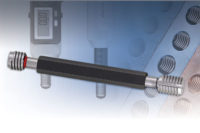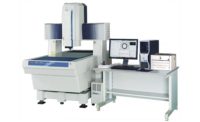“When all you have is a hammer, every problem looks like a nail.”
Most of us have had occasion to (or even reluctantly needed to) put a hammer to a nail, which makes the above analogy so relatable. However, as the phrase suggests, there is usually more than one way to skin a cat, or more accurately, there is an impulse to turn to solutions we are comfortable with or that have worked in the past, even if these solutions have become outdated, flawed or inappropriate in trying to solve the problem. To complete the analogy, imagine using the same hammer when you now need to drive a screw.
Luckily, the construction and DIY industry have developed and provided the world with the right tool for the right job, in this case, a screwdriver. Quality has written extensively and provided analysis on the concept of the right tool for the right job, from optical comparators to gages, and this approach to problem solving is prevalent in many industries beyond construction and quality control.
Take, for instance, a subject that touches all businesses—and can, in many ways, be applied to life in general—risk management. The first step in risk management is identifying risk. There are a host of techniques and tools available to the risk analyzer, many of which are familiar to the quality industry, such as regular document review, root cause analysis, and SWOT analysis. Once the risk has been identified, the company can “choose” from four main categories, approaches, or “tools” to manage that risk: avoidance, reduction, sharing, and retention.
In order to understand these categories, let’s think about it in terms of riding a motorcycle. Starting with knowing how to and being able to operate a motorcycle, and understanding you will encounter other vehicles, drivers, and obstacles on the road, you may also want to wear a helmet and other protective gear before venturing out on a motorcycle. This all falls under the category of reduction.
Anyone who has ever operated a motor vehicle is aware of the need for insurance. Although mostly a financial concern, insurance guards us against liability or medical bills in case of an accident. This is called sharing, or the transfer or outsourcing of the financial risk and/or liability of an accident.
After your analysis, if you still wish to ride a motorcycle, in essence, without wearing a helmet, you have chosen retention—simply accepting, and, in the business analogy, budgeting for any liability or bodily harm you may encounter from riding a motorcycle. This is one end of the spectrum. The other is avoidance. If your analysis tells you that wearing a helmet doesn’t sufficiently assuage the prospect of an accident or harm, you might choose to just not ride a motorcycle. In the same vein, a business may choose to just not get involved in a business, sector, or product.
And we have reached a story-within-a-story. Quality cannot be avoided. It is a tool ensuring businesses and manufacturers against risk. And using the right tool for the right job helps ensure quality. For instance, shaft measurement and hardness testers. So, check out “Shaft Measurement: What is the Best Tool for the Job?,” “Hardness Testers: Know Your Options for Best Results,” and everything else we have to offer in this month’s Quality.
Enjoy and thanks for reading!







